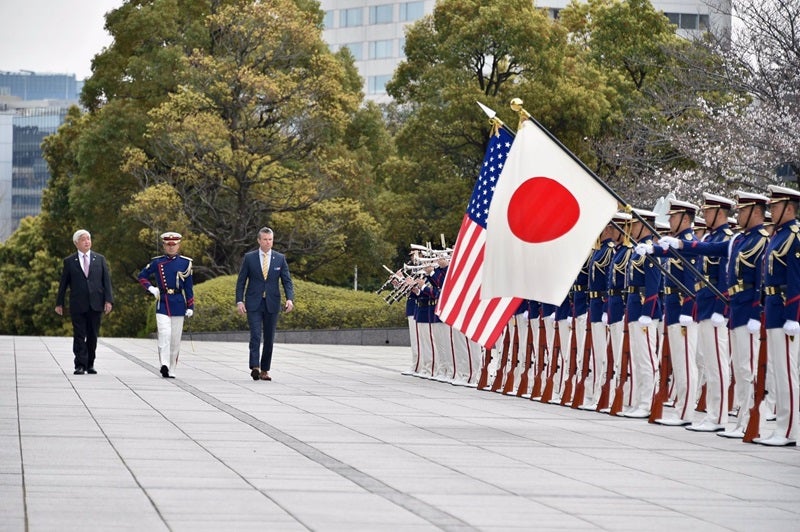Japan’s Defence Minister, General Nakatani, raised the possibility of joint production of SM-6 missiles alongside the US at a joint press conference in Tokyo this week.
Nakatani mentioned in passing that he had proposed the idea during talks with his American counterpart, Pete Hegseth, during a visit to the country on 30 March 2025.
The missile – which can be adapted for anti-surface, anti-air and ballistic missile defence – is used by the US Army and Navy and features in several allied arsenals.
In January, the US government approved a $900m (Y135bn) sale of 150 SM-6 Block I missiles to Japan’s Maritime Self-Defense Force.
Currently, SM-6 is deployed on 60 US Navy surface combatants. Raytheon, the manufacturer and contractor, has delivered more than 500 missiles to the service.
SM-6 missiles of all types (of which there are three: Blocks I, IA and IB), are integrated and assembled at Raytheon’s facility in Redstone, Alabama. Last April, the centre expanded by 26,000 square feet, more than 50% of the initial space, to grow its capacity to meet global demand.

Western Pacific build-up
Co-production of SM-6 missiles would be the next step in a series of bilateral military developments in Japan and the Western Pacific theatre to deter Chinese military aggression.
The US has already made long-standing efforts to build-up its military posture in the South West island chain of Japan, known as the Ryukyu Islands, upgrading coordination, command and control as well as stand-off capabilities since July 2024. Yonaguni, the most western island in the chain, is 111 kilometres, or 68 miles, from Taiwan, a hotbed for conflict between the US and China.
“We are going to put America first. But America first does not mean America alone,” Hegseth told the press, endowing the bilateral relationship with Japan, a major strategic ally.
Japan is just one of several major players working with America to contend with China in the Pacific. Others include Australia and South Korea, both of which purchase SM-6 missiles from America.
Similarly, the Philippines has worked extensively with the US to bolster its security against regular Chinese intrusion. Particularly, the People’s Republic of China has expressed disapproval in December 2024 of the Philippines purchasing the land-based Typhon mid-range missile system. This launcher fire SM-6 and Tomahawk missiles ranging 250 miles and 1,500 miles respectively.
A Chinese Armed Forces spokesperson observed that the distance from “China’s Huangyan Dao”, or Scarborough Shoal, a disputed atoll, to the Philippines’ Luzon Island is approximately 240 kilometers (149 miles), while the distance from Hainan Island to Luzon Island is about 900 kilometres, or 559 miles.
“If the Typhon system was procured,” the Chinese military spokesperson said, “the militarily-disadvantaged Philippines believes it would gain strike capability against Chinese territory, allowing it to bargain with China and even challenge China’s authority.”









